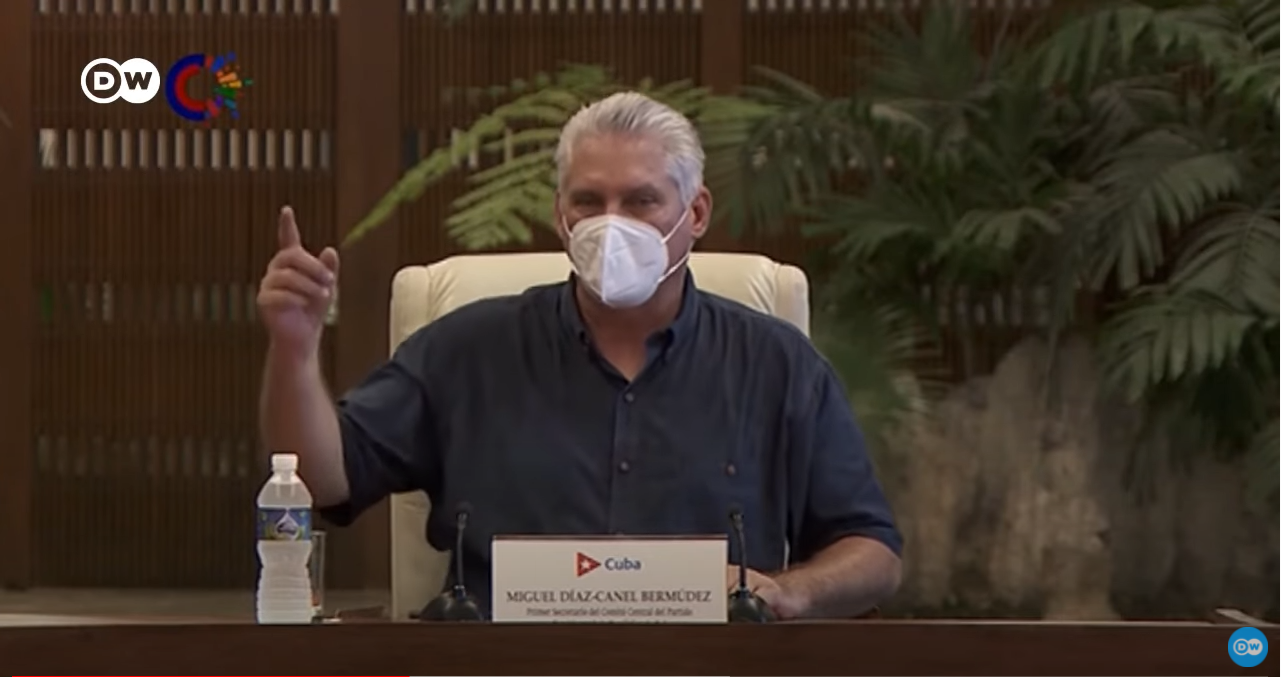In a sense, at least on one point, both the United States and Cuba are on the same page. They persist in addressing the crisis that resulted in the first open protest against the sclerotic regime with ineffective old actions, that had repeatedly failed in the past.
Sanctions, whether indiscriminate like those imposed by the Trump administration, or selectively targeted as now president Biden suggests, will be ineffective. Tweaks and currency manipulations by the regime such as the recently adopted dollarization of the economy – a botched-up monetary reform that in effect has further impoverished the great majority of Cubans with no access to hard currency – will never transform the 62-year-old stagnant dictatorship into a thriving socialist-capitalist autocracy like Vietnam.

“No one saw it coming. It was totally unexpected”, admitted an embarrassed State Department official in Washington referring to the protest against the Cuban regime. The severely challenged US diplomatic and intelligence machinery should have known better. Central America, after all, is what the United States has always considered its “near abroad”.
In Havana meanwhile, the little-known new president Miguel Díaz Canel, an engineer with a reputation as a reliable party apparatchik, just appointed last April by the 90-year old Raúl Castro as his successor, was facing the unprecedented crisis like a latter day Romanian Ceausescu.
He went live on state TV, a discredited source of information since the introduction of social media on cell phones in 2018. He exhorted the masses to go out in the streets and confront the “mercenaries“.
The uncharismatic Díaz Canel was clearly no Fidel Castro. “The battle order has been given!”, the hapless president intimated. But the demonstrators, and not the communist supporters, kept coming. Then the security forces stepped in. Hundreds of arrests were made but there was no serious violence. An artist, denounced by plainclothes police as a social parasite, was thrown into a garbage dumpster but he emerged unhurt.

The street protests had started on a small scale in response to social media messages, roughly 80 kilometers east of Havana in the province of Matanzas, where in the first week of July 1,327 new Covid cases were reported on a single day, nearly half of the country’s total infections. Soon the hashtags #SOSMatanzas and #SOSCuba started to trend on Twitter.
Cubans were asking for a “humanitarian corridor”. Yet the government remained in denial. It insisted that the pandemic (stable only until last March according to the UN World Health Organization, but then dramatically escalated from May onwards) was under control, thanks to the allegedly “very effective” Soberana and Abdala homegrown vaccines: actually untested and hard to find – to the extent that Cuba is now experiencing the worst rate of Covid infection in the Caribbean after Haiti.
“Our doctors grow in adversity”, countered the official slogan, with the standard accusation that the US decades-old trade embargo, made even harsher by the Trump administration tighter sanctions, was the main cause of Cuba’s increasingly dire economic crisis.
In reality, while it is true that both the American embargo and Covid, in addition to the collapse of the island’s tourist industry, had a serious negative effect on the economy, the failure of the decades-old Cuban impoverishment is largely systemic. “Cuba, a country whose revolution was praised by the world’s progressives, has become an autocracy that has failed to bring about economic and social development”.

This terse comment contained in a bilingual paper titled “Why Cubans took to the streets”/ “Protestas en Cuba: los cubanos se vistieron de ciudadanos” by two academics from both sides of the Atlantic, Laura Tedesco of the St. Louis University Madrid Campus, and Rut Diamint of the Universidad Torcuato di Tella of Buenos Aires, fairly sums up the causes of the crisis.

The roots of the Cuban unrest, contrary to what not only the failing Castrista regime, but also the United States conservatives would have the world believe, are not ideological. Many of the participants in the protests, that started in the small towns away from the capital, and then quickly extended through the country via the web, were not politically motivated. Some of them indeed were not even born when Fidel Castro became the acclaimed Líder Máximo of a revolution that they never saw put in practice.
Hence arose the cries that terrify not only the faltering Havana regime, but any autocracy: “Abajo a la dictadura and “libertad”. What happens now in Cuba will affect not only the island’s stability, but that of the whole Caribbean area and beyond. Think Haiti and think Venezuela.












